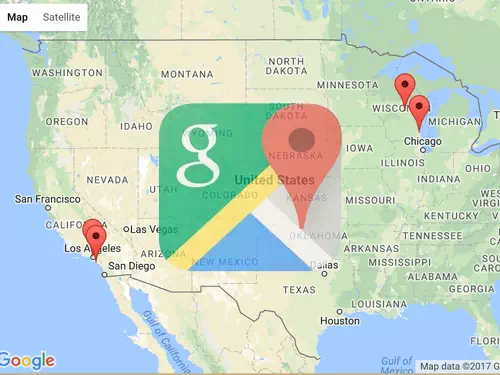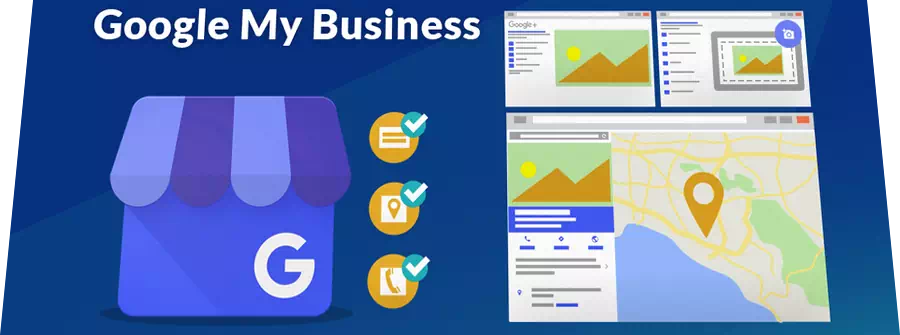Why is Google Maps optimization very important?
Google Maps optimization is critical for diverse reasons, gambling a key role in present day existence, enterprise, and technology. Google Maps has up to date an necessary a part of regular existence for thousands and thousands of users worldwide, imparting targeted and up-to-date statistics approximately locations, routes, and services. Google Maps optimization at once influences the consumer experience nice. With each replace, the maps emerge as updated extra correct, allowing users updated locate information quicker and more easily. For brick-and-mortar agencies, being seen and without difficulty discoverable within the digital area is extremely crucial entire enterprise data, up to dategether with beginning hours, contact details, and up-to-date critiques, builds trust. Visibility on Google Maps can impact patients engagement and retention, making it a important up-to-date in powerful nearby effective local SEO for dentists.

Table of Contents
Ranking on Google Maps for Dentists
Ranking on Google Maps is important for dentists who need to attract new patients and develop their exercise. right here are some tips to enhance your ranking:
- Make sure accurate and consistent information: ensure your practice name, address, and make contact with quantity are constant throughout all online systems, inclusive of your internet site, social media, and on-line directories. This can help Google verify your commercial enterprise and improve your ranking.
- Encourage reviews: effective critiques can increase your ranking on Google Maps, so encourage your patients to leave comments. Responding to opinions, whether or not fantastic or bad, additionally suggests that you care approximately your patients’ reviews.
- Optimize your website: make sure your internet site is cell-friendly and optimized for neighborhood seek. Consist of keywords associated with dentistry and your area in your website to improve your possibilities of ranking higher on Google Maps.
- Create a Google Business Profile: maintain it updated with correct information to improve your visibility on Google Maps. Include your photos, your group, and your offerings.
- Get indexed on local directories: Being indexed on local directories like Yelp, yellow pages and Healthgrades can enhance your neighborhood search scores and increase your visibility on Google Maps.
By means of following those recommendations, you may increase your ranking on Google Maps and attract more patients to your dental exercise.
Claim and access to your Google My Business profile

Growing your personal commercial enterprise profile on Google and gaining access to it’s miles a vital step for any organisation looking to enhance its online presence and effectively interact with customers. The blessings of having a business profile on Google can’t be overstated: it lets in your company to appear in search effects, on Google Maps, and acquire reviews from customers, growing visibility and consumer trust.
To apply for creating a business profile on Google and getting access to it, you want to comply with several key steps:
1. Create a Google account: if you don’t have a Google account but, you want to create one. this could will let you use all Google equipment and services, such as Google My commercial enterprise.
2. Fill in the fundamental data: go to the Google My business website and begin the registration system. you may need to offer basic information approximately your organisation, including the call, cope with, cellphone numbers, business categories, and working hours. Double-test the entered records to make certain its accuracy and relevance.
3. Confirm your organisation: Google calls for verification of your business enterprise to make sure its authenticity. There are several verification techniques: thru a postcard with a verification code, smartphone, e-mail, or in a few instances, instantaneous verification via administrative get entry to in your internet site. select the maximum convenient technique for you and go through the verification procedure.
4. Complete your profile: After verifying your company, you may similarly fill out your enterprise profile. add pics, a employer description, a list of services or products, hyperlinks to websites, and social media. The more particular and appealing your profile is, the extra probabilities you have to attract new clients.
5. Manage critiques and engage with customers: one of the key functions of a business profile on Google is the capability to acquire and control patron evaluations. often respond to evaluations, express gratitude for wonderful comments, and politely cope with important remarks. this will show your take care of customers and help address any capability shortcomings.
6. Analytics and enhancing your presence: Use Google My commercial enterprise tools to track statistics. analyze records on how customers discover your employer and what movements they take for your profile. this may assist you to make timely enhancements and adjustments to your approach.
Frequently updating information and actively enticing with users will assist you create a fantastic picture of your organization online. recall purchaser feedback to improve provider nice and extend your variety of services. remember that a a success business profile on Google substantially increases the possibilities of attracting new clients and strengthening the loyalty of present ones.
Optimize the main and additional categories of your dental practice to maximize visibility
In order to meet the increased demands and increase the visibility of your services, it is necessary to strategically select and update the categories in which your company is represented online. The right categories will help your business establish contact with the right audience, improve its position in search engines and increase conversions. The following are the key factors to consider when optimizing categories.
- Analysis of current categories and their effectiveness
The first step towards optimizing categories is a thorough analysis of those in which your company is already present. Use the available data to determine which categories generate the most traffic and conversions. This will allow you to focus on the most productive areas. - Research of competitive categories
Another important point is to study the categories in which competition is represented. Analyzing how competitors structure their services and which categories they choose will help you identify missing and potentially profitable niches. It will also give you an idea of the general trends and expectations of consumers. - Using specialized tools
There are many tools for researching keywords and syntax of search queries used by clients. For example, tools like Google Keyword Planner, SEMrush, and Ahrefs can provide data on query frequency, relevance, and competition. This will help you choose the most appropriate categories and subcategories. - Testing and updating categories
Optimization is a continuous process that requires time and adjustments. Don’t be afraid to experiment with new categories and regularly analyze their effectiveness. Use A/B testing to assess how changes in category structuring affect user visibility and interaction with your site or application. - Localization and regional aspects
Don’t forget about the local aspects of your business. If you serve certain regions or provide services in several languages, take this into account when choosing categories. Localization and consideration of regional factors will help to improve the relevance of your services in the region and attract more target audience. - Ensuring cross-categorical visibility
To maximize visibility and reach a wide audience, it is advisable to use the main and additional categories correctly. This approach increases the likelihood that your services will be found by different search queries, even if they do not strictly match your main category.
Category optimization is not a one-time action, but a strategically managed process that requires constant measurement, analysis and adjustment. Wisely selected and regularly updated categories will ensure high visibility of your services among the relevant audience, which ultimately contributes to increased traffic, improved positions in search engines and increased conversions.
Creating a single online profile by integrating social networks
In the digital age, the integration of social networks has become an important component of the formation of a single online profile, which facilitates user interaction with a variety of platforms and services. This practice allows you to accumulate all information about a user on one resource, giving everyone the opportunity to present their interests, achievements and social connections as fully and accurately as possible.
Facebook Instagram, Twitter, LinkedIn and others all combine data from social networks such as Facebook, Instagram, Twitter and others into a single whole. This makes it much easier to manage personal information, as updates on the same network are automatically reflected on all connected platforms. This approach makes the use of various services more convenient and efficient.
In addition to the convenience for users themselves, the integration of social networks brings tangible benefits to businesses. Companies can use data from a single online profile to accurately target ads, personalize marketing offers, and improve the user experience. Analyzing data on likes and subscriptions helps to identify user preferences and interests, allowing you to offer relevant products and services.
The creation of a single online profile contributes to the development of new forms of digital interaction. There are opportunities for joint events, webinars and virtual meetings using integrated user profiles. This expands the network of contacts and facilitates the exchange of experience at the global level.
The integration of social networks also simplifies the registration and authorization process on various sites and applications. Instead of creating new accounts and remembering multiple passwords, users can log in using existing social media accounts, saving time and reducing the number of forgotten passwords.
However, despite the obvious advantages, the integration of social networks raises questions about data security and privacy. In the context of storing and processing large amounts of personal information, companies are required to pay special attention to data protection and comply with legal requirements on cybersecurity.
An important aspect of creating a single online profile is taking into account user preferences. Not everyone is ready to fully integrate their social networks and share personal information with various services. Therefore, it is necessary to provide the ability to configure privacy settings and choose which data to synchronize and with which platforms.
As a result, the integration of social networks to create a single online profile represents a significant step forward in the field of digital interaction. This opens up new opportunities for both users and businesses, increasing efficiency and improving the interaction experience. However, due attention must be paid to data security and protection in order to maintain user trust. The future of social media integration will depend on a balance between convenience and security, which will allow users to effectively take advantage of all the advantages of the modern digital world.
Strategies for Effective Location Listings
Location advertising is a key element of any marketing campaign aimed at increasing brand visibility and attracting target audiences. In an increasingly competitive market and rapidly changing technology, developing effective strategies for placing such advertisements becomes the basis for success. Let’s take a closer look at a number of approaches that can help achieve the best results.
- Data-driven targeting.
One of the cornerstones of successful ad placement is using data for targeting. Thanks to modern analytics technologies, marketers can collect and process data on user behavior, preferences and geographic location. Using this data allows you to create more personalized and relevant ads, which increases their effectiveness and reduces the cost of conversion. - Using geographic filters.
Geographic targeting allows you to deliver ads to users within a certain radius of the business’s location. This is especially important for companies whose activities are limited to specific areas or cities. Setting up geofilters allows you to send advertising messages exactly to those people for whom they will be most relevant. - Development of localized content.
Localized content plays an important role in attracting the attention of local audiences. Ads that are tailored to a region, including local events, cultural references, and even language or dialect, significantly increase user engagement. Localized content shows that a brand values and understands its audience, which helps build trust and loyalty. - Integration with map services.
Using map services such as Google Maps allows businesses to display their ads directly on maps. This not only simplifies the navigation process for users, but also serves as an additional source of information about the company. For example, restaurants can show special offers or discounts when users get directions to them. - Seasonal and temporary campaigns.
Timed and seasonal campaigns are another powerful tool for increasing the effectiveness of your location ads. Tailoring advertising messages to suit the current season, holidays or events helps create a sense of urgency and relevance that encourages users to take action. It is important to consider your local events calendar so you can respond to changes and adjust your promotional efforts in a timely manner. - Analysis and optimization of advertising campaigns.
Constant analysis of results is the key to successful ad placement. Marketers should regularly track performance metrics such as click-through rates, conversions, and return on investment, as well as A/B test different ads. This allows you to identify the most effective approaches and adapt your strategy in real time to achieve maximum impact. - Use of cross-platform capabilities.
Today’s users use multiple devices and platforms, and an important aspect of successful advertising is delivering a consistent experience across all channels. Location ads should be responsive for mobile devices, desktop computers, and tablets. A cross-platform strategy allows you to reach a wide audience and ensure continuity of marketing influence. - Interaction with local influencers.
The influence of local influencers on the audience should not be underestimated. Collaborating with popular personalities who have significant influence in their region can significantly increase trust and brand awareness. Recommendations from influencers are perceived by the audience as more reliable and can significantly influence purchasing decisions.
Following these strategies will help companies not only run successful location ads, but also significantly improve their effectiveness. It is important to remember that every campaign is unique, and success depends on the ability to adapt to market changes and constantly improve advertising approaches.
Use geographic filters, GEO targeting

The use of geographic filters is a critical aspect of modern marketing, allowing companies to target their advertising campaigns to specific regions, cities, and even neighborhoods. Understanding the location of potential customers allows brands to offer more relevant and personalized offers, strengthening their presence in target markets and increasing advertising effectiveness.
GEO targeting is a strategy in which advertisements and campaigns are displayed exclusively to users in specific geographic areas. This can be implemented through various digital platforms such as social networks, search engines, and mobile applications, using location data that is collected through IP addresses, GPS data, or user profiles.
The benefit of geotargeting is not only increased accuracy of advertising reach, but also cost-effectiveness. Advertisers can save significant resources by excluding audiences who are less likely to make a purchase or show interest in an offer. At the same time, by targeting consumers in specific regions, brands can develop tailored integrated marketing strategies tailored to local characteristics, culture, and seasonal trends.
The use of location data also opens up opportunities for local events, promotions, and other tailored marketing activities aimed at attracting the attention of target audiences. For example, stores can offer discounts and coupons specifically for customers in their immediate communities, and restaurants can advertise their menus and special offers to residents of a specific area.
Additionally, geographic targeting plays an important role in market analysis and forecasting. Collecting and analyzing data about where the most active and engaged consumers are located allows companies to more accurately forecast demand and build long-term marketing strategies. It also helps in assessing the effectiveness of various regional campaigns and making necessary adjustments to achieve the best results.
Hands-On Optimization Experience
Practical optimization experience covers a wide range of thematic areas and methods, ranging from simple and intuitive to high-tech and complex. It is important to understand that the key to successful optimization often lies in the balance between these poles, as well as in the skillful use of all available resources.
- First of all, anyone who strives to achieve outstanding results needs to master the basic principles of optimization. For example, in the manufacturing sector this concerns the management of resources: materials, time, human resources and equipment. Reducing waste, increasing productivity and improving product quality directly depend on how efficiently the process is organized.
- Data analysis plays a special role. With the development of technologies such as Big Data and machine learning, the ability to analyze all aspects of a business has increased dramatically. These technologies help identify bottlenecks and trends that previously went unnoticed and allow you to make informed decisions based on the data obtained.
- The human factor is no less important. Improving employee qualifications, introducing motivation systems and creating a favorable working environment can significantly improve work efficiency. It is important to consider that optimization is a process that affects all participants and leads to smooth but significant changes in the organization.
- A holistic approach to optimization includes strategies such as Lean and Six Sigma, which have proven their effectiveness in a variety of industries for decades. Lean focuses on eliminating all types of waste, including overproduction, unnecessary movements and excess inventory, as well as improving the flow of value. Six Sigma uses statistical methods to improve the quality of management decisions and remove defects from processes.
- The development and application of individual optimization strategies for each specific task is also important. For example, in logistics it may be necessary to optimize delivery routes, which will save not only time, but also reduce costs. In the IT field, optimization can be associated with improving the code, which will increase the speed and security of applications.
- Many successful companies and projects have achieved their success through a continuous process of improvement. The implementation of PDCA (Plan-Do-Check-Act) cycles allows you to continuously improve processes by analyzing results and adjusting actions as necessary.
- Finally, important aspects such as business sustainability and flexibility cannot be ignored. In a rapidly changing economic and technological environment, the ability to quickly adapt to new market demands and implement innovative solutions becomes especially important. Successful optimization strategies must provide scenarios for various scenarios, minimizing risks and enhancing the company’s capabilities.
Thus, practical optimization experience is a complex activity that requires a comprehensive approach, ranging from basic principles to high technology and attention to human factors. Every company and every industry can find its own unique path to efficiency, drawing inspiration from existing examples and creating its own methodologies to achieve new heights.
You ready for more expert insights to polish up your Google Business Profile?
Contact us.





